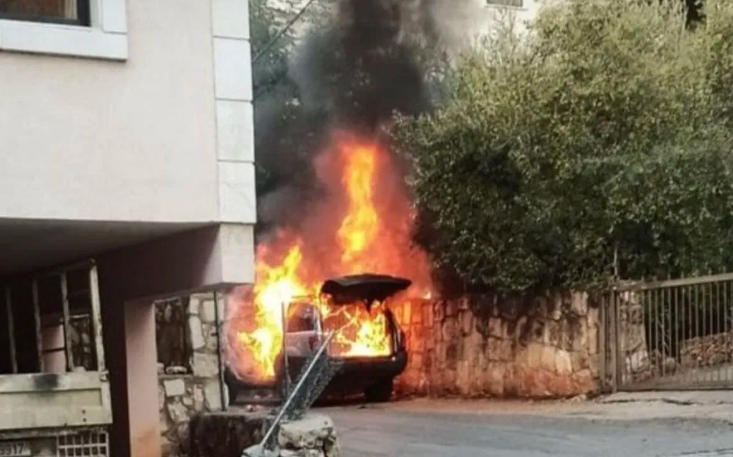Recent Explosions Involving Walkie-Talkies and Pagers in Lebanon (GS Paper 3, Terrorism)

Context and Incident Overview
- Recently, Lebanon witnessed a tragic series of explosions involving modified handheld radios, including walkie-talkies and pagers, predominantly used by Hezbollah.
- These devices were covertly enhanced with Pentaerythritol tetranitrate (PETN), a powerful explosive, resulting in multiple fatalities and injuries.
- This incident not only illustrates the dangerous intersection of technology and modern warfare but also underscores the challenges faced by authorities in monitoring and controlling the activities of non-state actors like Hezbollah.
Understanding Walkie-Talkies
Definition and Functionality
- Walkie-talkies are handheld, portable two-way radios that enable real-time communication over radio frequencies.
- They typically consist of a transmitter-receiver unit, an antenna, a speaker-microphone combination, and a push-to-talk button.
Historical Development
- Origins: Developed in the 1930s, walkie-talkies were first utilized by military personnel, revolutionizing battlefield communication. Their initial designs catered primarily to pilots and ground troops, offering them a reliable means of staying connected.
- Evolution: Over the decades, walkie-talkies have undergone significant advancements, becoming more compact and feature-rich, integrating technologies that allow for clearer communication and additional functionalities.
Applications
- Military and Security: Walkie-talkies are crucial in military operations, allowing troops to coordinate without reliance on cellular networks, which may be unreliable in combat zones.
- Emergency Services: Police, firefighters, and paramedics frequently use these devices for efficient communication during emergencies.
- Industries: Various sectors, such as construction and hospitality, leverage walkie-talkies to facilitate communication in environments where traditional phone signals may be weak or non-existent.
Limitations
While effective, walkie-talkies are not without drawbacks:
- Battery Life: Limited battery duration can disrupt communication during critical times.
- Coverage Issues: They may lose coverage in areas with geographical barriers.
- Privacy Concerns: Without encryption, conversations can be intercepted, raising security risks.
Understanding Pagers
Definition and Functionality
- Pagers, also known as beepers, are wireless devices that receive and display messages, traditionally used for short communications.
Operational Mechanics
- Pagers operate using radio signals transmitted from towers, enabling them to work effectively in areas with weak cellular signals.
- They are particularly valued in situations where instant communication is necessary.
Types of Pagers
- One-way Pagers: These devices receive messages but do not allow for replies, alerting users through beeps or vibrations.
- Two-way Pagers: These allow users to send and receive messages, although their functionality is more limited compared to modern smartphones.
Applications in Covert Operations
Pagers have unique advantages in covert operations:
- Low Susceptibility to Surveillance: Without GPS or internet connectivity, pagers are less likely to be tracked, making them appealing for clandestine communications.
- Difficult to Intercept: The radio frequencies used by pagers can be harder to monitor than cellular communications, reducing the risk of interception.
- Modifiability for Covert Uses: Pagers can be altered to trigger signals for remote detonations or to send alerts without drawing attention, making them suitable for military and paramilitary operations.
Hezbollah: An Overview
Definition and Background
- Hezbollah, meaning "Party of God," is a Shia militant group and political party based in Lebanon.
- Established during the Lebanese Civil War (1975-1990), it emerged largely in response to Israeli military actions in southern Lebanon.
- The group has received considerable backing from Iran and its Islamic Revolutionary Guard Corps (IRGC).
Structure and Influence
- Militant and Political Role: Hezbollah operates both as a military organization and a political party, with significant influence in Lebanese politics and society. It is known for its strong military capabilities, including a vast arsenal and training, making it one of the world's most heavily armed non-state actors.
- Designation as a Terrorist Organization: Various countries, including the United States and Israel, have classified Hezbollah as a terrorist organization due to its involvement in attacks against civilians and military targets.
Implications of Recent Events
The recent explosions involving modified communication devices underscore several critical issues:
Evolving Nature of Warfare
- The adaptation of traditional communication devices like walkie-talkies and pagers for military purposes highlights the continuous evolution of warfare tactics.
- Non-state actors are increasingly leveraging existing technologies to gain tactical advantages while evading detection.
Security Challenges
- The incident emphasizes the challenges faced by Lebanese authorities and international stakeholders in monitoring and controlling the activities of militant groups.
- The covert modification of commonly used communication devices raises serious concerns about the effectiveness of counter-terrorism efforts and the ability to prevent future attacks.
Geopolitical Implications
- The use of modified devices by Hezbollah may also have broader geopolitical repercussions.
- As tensions in the region persist, incidents like these could exacerbate conflicts, drawing in regional and global powers and complicating diplomatic efforts for peace.
Technological Regulation
- There is a pressing need for improved regulatory measures concerning the use of communication technologies in conflict zones.
- Developing strategies to monitor and control the modification of devices used by militant groups is essential to enhance national and international security.
Conclusion
- The tragic events in Lebanon involving the explosions of modified walkie-talkies and pagers serve as a stark reminder of the complexities of modern warfare and the challenges posed by non-state actors like Hezbollah.
- As technology continues to evolve, so too must the strategies employed by nations and international organizations to combat threats to security and stability.
- Continuous vigilance and innovation in counter-terrorism efforts are imperative to address the evolving landscape of conflict in the Middle East and beyond.


